
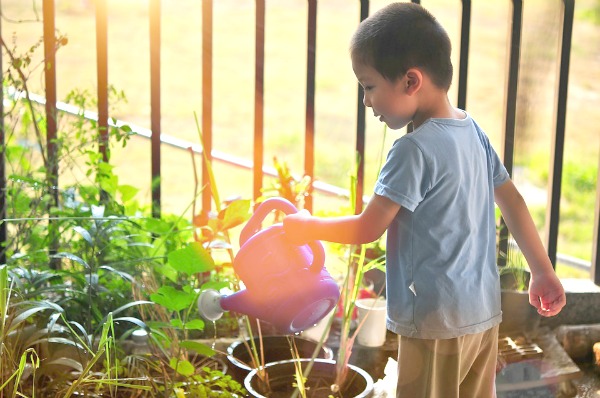
You can teach your children how to garden by following a few simple steps.
I live in Colorado and our weather in the spring is very unpredictable. We could have snow all the way through May and freezing temps. If we want to harvest vegetables in the Fall, we need to get some things started indoors first.
Starting seeds indoors saves money. We start our seeds under garden lights and on heating mats. It is simpler than it sounds to teach your children how to garden.
Teach Children How to Garden
Children learn a great deal about God’s creation through gardening. The biggest lesson we can teach kids is that we are God’s helpers and we need Him.
We can plant His seeds, care for the soil by using organic compost, and water. This whole process is magical and gardening connects all of us to our Creator.
Teach your children to garden and they will appreciate food and the work farmers do. There are many easy veggies to grow with kids that you can plant.
Kids may not realize where fruits and vegetables come from unless they garden or live on a farm. If you were to ask a young child where the food on their plate came from, they may say the grocery store.
I didn’t realize how awesome God’s natural healthy foods were until I started gardening!
It is so rewarding to walk through the garden on a cool evening and pick dinner for my family. It is a treat to go check on my garden throughout the day and snack on fresh produce.
My two kiddos snack on cherry tomatoes, green beans, and sweet peas. It is all so good! Gardening is a fun way to have quality family time together.
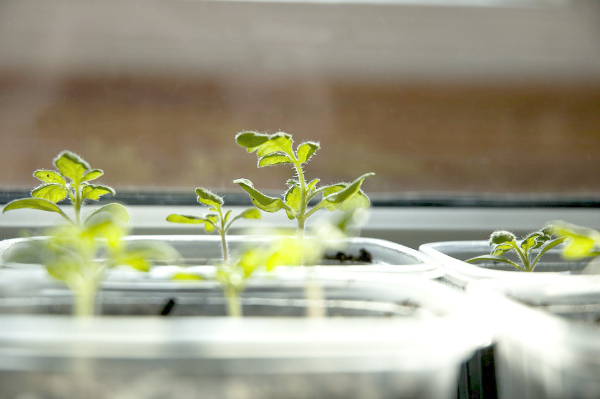
Tips for Indoor Gardening with Kids
We start our gardening indoors in March. In our basement we have metal rack shelves with a heating and light system. The seedlings grow strong roots and stems. This idea for making a DIY miniature greenhouse is a cute way to grow indoors.
Light and Heat Systems
You can use florescent lights and hang them under your kitchen cupboards or, like I do, on a metal rack shelf. You can also use T5 fluorescent bulbs on a premade stand just for indoor gardening.
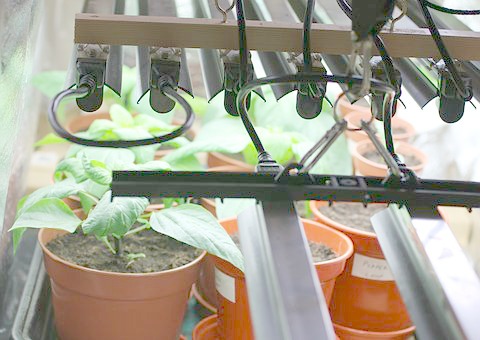
Starter seedling hot pads can be helpful too. The pads will be the very first thing you use to get your seeds to sprout. The heat is what does the trick. You will also want to purchase good soil and make sure it is labeled for starting seeds.
Seed Starters
You can have a blast with pre-formed seed starters, like Jiffy Pellets. They are so cool! The pellets expand when they get wet. Kids can watch the pellets grow within seconds and then plant the seeds right in the little pellet pockets.

You can help your kids make little green houses by buying planting starter kits with plastic lids. These are great because they help keep the moisture in for seedlings. Seedlings need to stay wet in order to sprout. You can take the lids off when the plants grow to touch the lid.
Most annual vegetables should be planted indoors six weeks before the last frost in your area. Read the back of your seed packets and follow instructions carefully. You can also find an online calendar of when you should start planting seeds in your area.
How to Plant Seeds with Kids Indoors
Set up your family around the table with spoons for everyone. You will need a spray bottle to wet soil. Pour bags of dirt into plastic containers to prep the containers.
Kids can scoop dirt with a spoon into the planters. Sharpie markers work great for labeling the names of seeds on the planters.
After you get the dirt ready for the seeds, use the head of a pen to put a small hole in the dirt. This helps kids drop the seed in and cover. Kids love doing this. After seeds are covered up with a little dirt, spray again with the water bottle.
Gardening Science for Kids
Have kids check and water as needed. You can also have a garden growing chart for them. Have kids predict when they think the seeds will sprout.
When seeds sprout you can turn the lights on and make sure to water once or twice a day. Lights easily dry plants out.
When plants grow their second leaf you can transplant them carefully into a bigger container and keep them under the light. The week before you plant them outside, you will need about seven days to harden them off.
This simply means, that the seedlings need to get used to being outdoors so that they don’t go into shock. Have the kids help you carry the plants out into partial sun for an hour a day. Do this for 7 days.
After a week you can plant them in the garden or pots.
The best time of day to plant is on an overcast day or in the early morning before the sun is too hot.
You can get flowers started indoors too. It’s so much cheaper to start flower gardens by seed instead of full plants in bloom.
Gardening Teaches Life Lessons
Spring time gardening is full of surprises. Teach children how to garden and they will enjoy helping to care for the plants.
Let them take ownership of some of the plants. Take pictures of each stage so that kids can scrapbook their spring indoor garden. You could also have them draw their own pictures in a journal.
>>Turn this into a great homeschool activity with the How Seeds and Plants Grow Lapbook for 2nd-6th Grades. They have a great book list included too.<<
My daughter is excited and she has been a great help. Enjoy spring. Summer is coming just around the corner!
What plants or flowers are you planning to have in your garden this year?
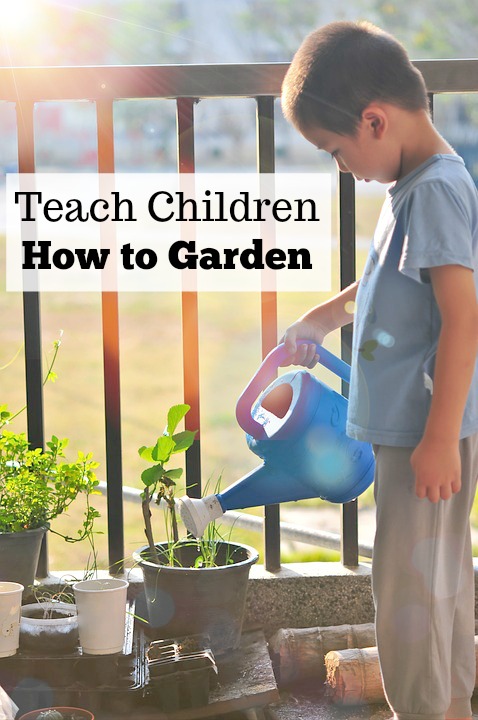

Lisa Brown is an aspiring writer and owner of The Family Roadmap Blog and a Parent Coach at the National Center Of Biblical Parenting. She has a 10-yr. old son, a 7-yr. old daughter, and has been married to her husband for 12 yrs. Prior to marriage, she worked over 20 yrs. enriching the lives of hundreds of children and families. Lisa has a Bachelors in Social Work and Early Childhood Education. To meet with Lisa about a parent concern or if you would like for Lisa to write an article or blog post, you can contact Lisa here.



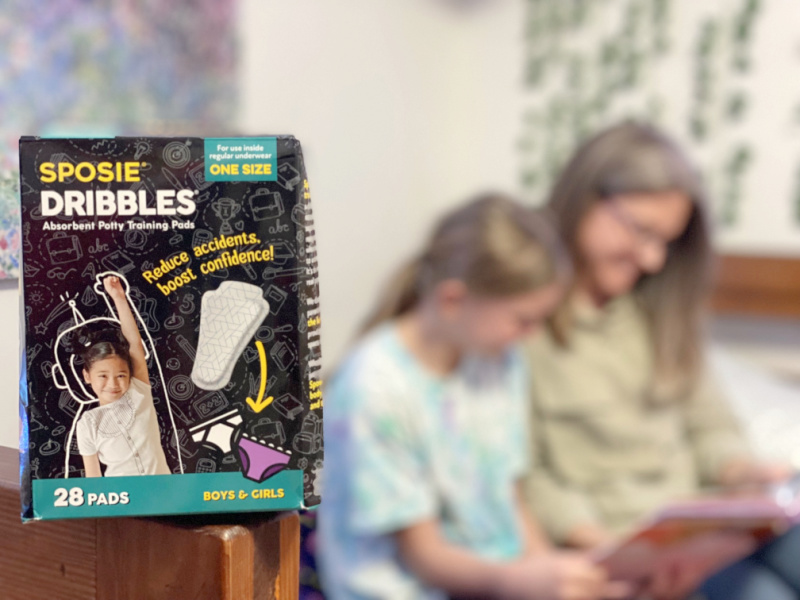

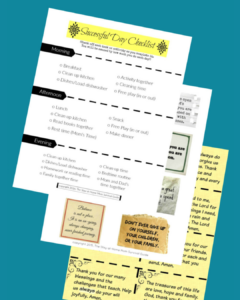
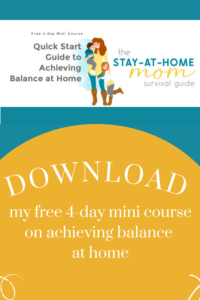
This is nice post for valuable lessons kids learn from gardening and having right article to see you here and thanks a lot for sharing with us.
Thank you!
I loved reading this! I can’t wait for my little one and I to garden together when shes a little bit older. (Mommy of a 3 month old) Living in the state of Maine, I found your advice will be needed with the similar weather and terrain!
I am so glad! It is such a fun experience.